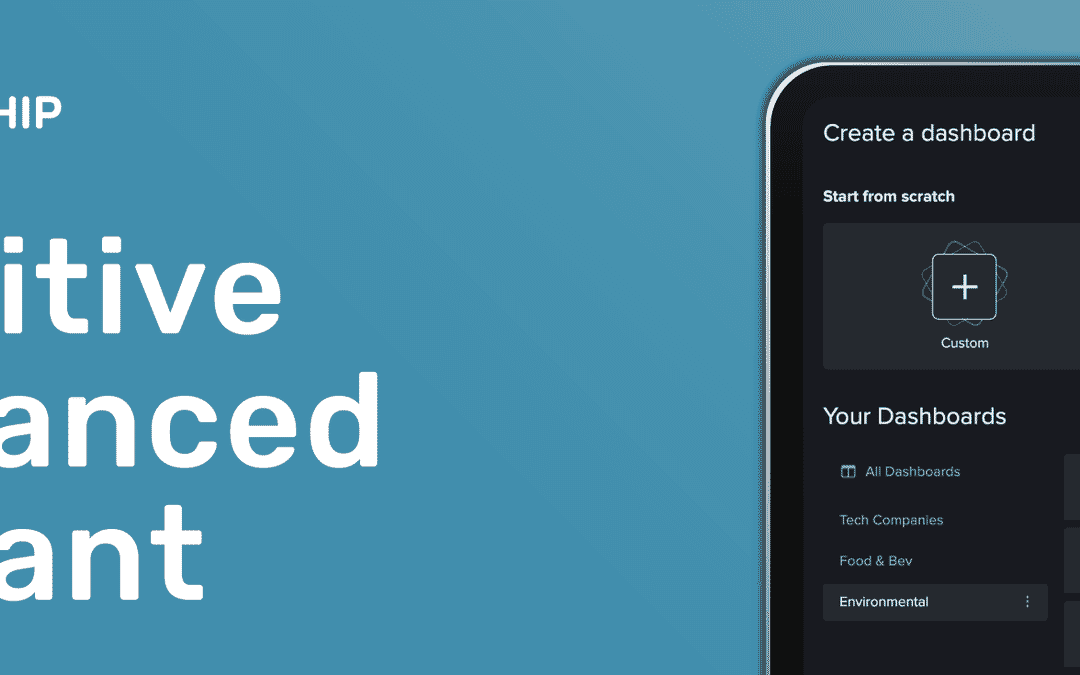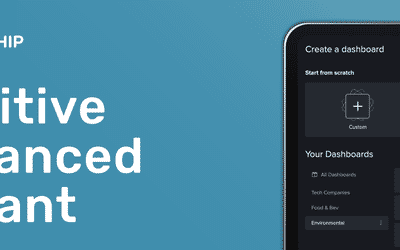Clickbait could be going “the way of the dodo”, according to Edelman’s Steve Rubel. We explore how expert newsrooms are supercharging their content with emotion instead.
Many publishers that had provocative, misleading, or ambiguous titles have seen a substantial drop in engagement. Viral sites have had to pivot their strategy to adapt to Facebook’s algorithm.
Instead, content that has a genuine value is being favored in the news feed. These are stories that inspire, educate and inform, or entertain. Because of this, successful stories need to be conversational, timely, and appeal to peoples’ emotions. From our own analysis, we’ve seen the most engaging headlines of top publishers reflect this shift.
At WhipSmart, we gathered a few people who know using emotion to supercharge their storytelling well. Moderating the panel was Steve Rubel, Chief Content Strategist at Edelman.
Our expert speakers were:
- Maia McCann, Editor-in-Chief & EVP of Original Programming at LittleThings
- Renan Borelli, Senior Director, Audience Development at MTV News
- Meena Thiruvengadam, Global Head of Audience Engagement at Bloomberg
On emotion-bait
“How do we use emotion to build audiences?” asked Steve Rubel, “And where do you draw the line between emotional content that is real and authentic, and what could be seen as manipulation?”
“At LittleThings, where we draw the line is shocking for sake of being shocking and also, infuriating and fear-mongering content,” said Maia McCann. “We made a pretty significant pivot to add the word meaningful to our definition and this was after I ran the story of Omran, who was that little [Syrian refugee] boy sitting in shock, and I ran it in context with this video of a newscaster who was breaking down as she was reporting.
[fb_pe url=”https://www.facebook.com/littlethingscom/posts/594350094107700″ bottom=”30″]
“Little Things’ mission was feel-good, uplifting, and inspiring content at the time and so I got an [internal] email saying, Maia, this wasn’t feel-good. But I said it’s meaningful and our audience cares and our audience needs to see it.
However, the line for me, and I always remember this, is there was a video of a mother being swallowed by an escalator as she pushes her son to safety. That’s the line — now we’re publishing someone’s death, which is exploitative and we’re creating this false sense of fear.”
Renan of MTV News said, “A couple years ago, the trend was ‘you won’t believe’ or ‘this will give you all the feels’. Our community is very vocal, so if they don’t like what we put out there, they don’t like a headline or they don’t like the tone, we get comments like ‘why don’t you play music videos anymore?’ or ‘I don’t want to hear this from you’.
Tone is super important for us; they can smell inauthenticity. The great thing is our staff of writers and video creators are the peers of the people that we want to be reading and watching our videos. We try to tap into the actual enthusiasm we have for a specific thing.”
[fb_pe url=”https://www.facebook.com/105317422843784/posts/1613323935376451″ bottom=”30″]
Does emotion-baiting have a place in business content? Steve asked Meena of Bloomberg.
Meena said, “I think it’s about being fair and accurate in what you’re saying, and not taking things a step too far to drive virality or shares. If you say something like ‘this market is crashing’, and it’s really just gone down a little bit today, [then] we need to ask if we’re going overboard.”
“There are some things where there are natural emotional elements, like ‘this CEO went from getting fired to creating this amazing business empire’,” continued Meena. “That speaks to aspiration, inspiration, encouragement, and motivation.
“There, it makes sense to bring out that [emotional element], but for something like ‘here are the monthly job numbers’ or ‘this is the report on wholesale inventories, and what it means for the economy’, I think that’s going to be much harder. You can try and push it too far, and that’s what we try not to do.
With clickbait, you can only trick your audience so long before they get wise to it. You want to present your content honestly, and what’s good content will speak for itself.”
Audience awareness of emotion-bait
Steve asked the panelists, “How much do you think the users are aware of the emotional buttons that are being pushed by the press and content creators?”
Maia of LittleThings said, “We’ve really scaled back on using any words like shocked, stunned, unbelievable. I think people have gotten a lot smarter about what they’re consuming on social.
Publishers abuse the word unbelievable — I can’t even use the word when something is unbelievable and that’s frustrating… But it’s become a dirty word. Even using ‘what happens next’ seems to arouse this anger and this feeling of being misled in people. So we try to stay away from that.
Facebook released a blacklist of words in August 2016. Maia said, “We were using them so frequently that the Friday that we found out this was happening, we stayed in a conference room pretty late that night, retitling everything that was supposed to be scheduled for the weekend.”
“I woke up in the morning, and then like a gift from God, there was a story [that we published] that was the type of story that our audience would get really excited about, and it went viral immediately. The headline was straightforward, didn’t use any of the blacklist words, and I thought, there’s a way to still be enticing, we just have to be smarter, and work harder.”
What does clickbait mean with in-feed consumption?
Steve asked, “Is clickbait going the way of the dodo, since we’re moving away from clicking over to things, and content is meant to be consumed in-feed?”
Renan said, “Based on the signals we get from our friends at Facebook, they have said publicly that they’re going to start shifting the way that they surface things in the news feed, based on how long people are reading an article, how much they’re engaging with the article, and then how long people are watching videos.
They’ve been really forward with this and they’re trying to get original series and all these different new types of more premium content. I think now, if you have a longer video, and that engages people, I have to assume that we’re going to see that stuff become more successful on Facebook.”
Maia said, “I think there are use cases for just going direct-to-feed, and creating a Facebook native video for something, and there are stories that are better told by an article.”
Maia explained that LittleThings’ original content writers have recently been trying personal challenges, such as “the military diet”, consuming the daily recommendation of water, or going without coffee.
“When they try these, that story is better told with their emotions, and their own writing and photographs,” said Maia. “They’re using Snapchat, and we’re pulling those images into an article. Could we do that in a video? Yeah, but then you can’t speed through it if you just want to see certain things or have certain questions, about it. So there are some stories that are better told in article form.”
Inspiration for emotional content
“Where do you look for inspiration for on where you can pull the emotional lever?” asked Steve.
Maia said, “I look at magazines. I look at the stuff my mom shares on Facebook. Sometimes, for my audience, looking at a Reader’s Digest… There’s always something in there where you think, I should know that information. It’s not the least bit clickbait, but it’s like ‘that’s valuable, I need to know what’s going on’.”
Renan said, “For us, to give a shoutout to our wonderful host, NewsWhip. It’s such a powerful way to see the headlines that a publisher might run or, if it’s topic-specific, we can actually dig in and figure out how the same story was covered across multiple publications and we can see ‘Oh, EW covered it this way, VICE covered it this way, BuzzFeed covered it this way.’
We can look and see how our headlines compared to theirs. We can figure out for a particular story or set of stories, what headlines and types of levers worked best and we try to learn from it and figure out what our approach would be, what can we incorporate while still maintaining the MTV News voice.”
What’s off-limits
Steve asked, “Are there any areas you refuse to touch and put any emotion at all, given the political climate?”
Renan said, “From a politics perspective, we quickly learned that people didn’t necessarily want political snark from us. We’d get people in the comments telling us that we were too liberal, or we didn’t know what we were talking about, or go back to playing music videos. But MTV News has been covering politics since Bill Clinton was running for president, so it’s really ingrained in our DNA and it’s super important for us and our audience to cover those sort of stories.
We found, particularly from a video perspective, and occasionally an article perspective as well, that people don’t want the snarkiness from us. They don’t want dramatic and bombastic headlines. They want us to just lay things out directly.”
[fb_pe url=”https://www.facebook.com/105317422843784/posts/1612679098774268″ bottom=”30″]
Maia said, “We don’t speak to politics at all. We try to be the antidote. We do cover stories about people doing demonstrations around peace and love after terrorist attacks, but we don’t provide the gory details. It’s not that we glaze over it, but we’ll address it like ‘here’s some hope’.
Since we’re not competing with those hard news stories, we will see sometimes a bump in traffic, because we are the thing in your newsfeed that you go to when you can’t possibly read anything more about whatever the president did, or the terrorism.”
Inciting negative emotions
Steve said, “We’re mostly talking about making people feel uplifted in some way. Do you ever try by design, to get people feeling angry?”
Renan said, “We see a bunch of publishers that are really succeeding with strongly voiced and worded political commentary, and it’s not always the sites that you think of, it’s Teen Vogue, it’s Rolling Stone, it’s GQ and Esquire, where they have strong voices who are writing these really incisive pieces about politics.
When we try to sort of adopt that structure of a headline or a video that is more incisive and more outrage, we quickly found that that wasn’t working for us and we heard from our audience that that’s not what they’re looking for from us.”
Different platforms, different emotions
Steve asked, “How do you look at the different platforms and handcrafting your content for each one of them?”
Meena said, “For [Bloomberg], certain content performs better on certain platforms, so we look to make sure we’re highlighting the right content on the right platforms, but we don’t try to force everything on every platform because the way people consume content is different.
I think people can tell if you’re cutting corners and just putting the same thing up everywhere. Communities tend to appreciate it if you cater to the way content is consumed on the specific platform. For instance, something like Instagram, works for business brands because a lot of business content speaks to people who are looking for inspiration, motivation and education, and things like that.
So there is a way to appeal to that element on Instagram, but on Twitter, the finance audience seems much more interested in market movement, economic news, what’s happening right now, getting unfiltered, unbiased information on the ground, and less so about finding those inspirational stories.”
Going further with emotions
Steve: Do your users look to you to push the envelope in any way, or how do they feel about that, when you try to push the boundary?
Maia said, “We’re pleasantly surprised by our audience in terms of when we try to push the boundaries. We use Facebook Live as our platform to experiment with new types of content and we launched a show called the Beyond. The Beyond is about are mermaids real and could mermaids be possible? A lot of our audience is very into debating it.
It doesn’t fall into the definition of LittleThings at face value, but this show, does on average, 125,000 views on Facebook Live and it’s a branded show. It’s not us trying to explode a watermelon, so our audience is telling us that they’re genuinely interested.”
Thanks to Maia, Renan, Meena, and Steve for joining us at WhipSmart and sharing their wisdom with us.
For a look into the stories that tug at readers’ heartstrings, check out NewsWhip Spike. Our predicted interactions feature reveals the stories bound to entice your readers across web and Facebook.











